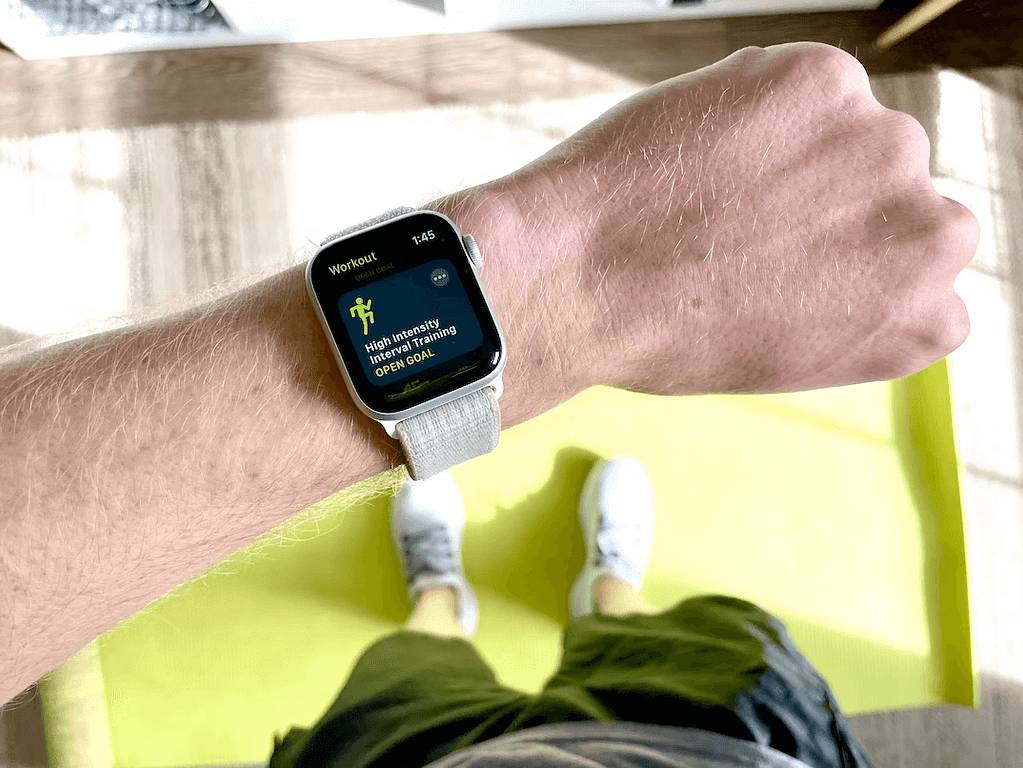When running a business, irrespective of its nature, access to reliable data is a crucial matter. It enables leaders to make low-risk decisions based on real-time intelligence, eliminating the need for guesswork (which often leads to costly mistakes). It also helps to deliver personalized client experiences and, through that, drives customers’ loyalty.
In the fitness industry, it goes even further – in this case, members expect data to play a part in their fitness journey. According to the Pew Research Center, as many as one in five Americans use fitness trackers to measure a range of metrics, including body fat percentage, sleep quality, and heart rate.
But how do you gather fitness data? And when you’ve established gym data collection processes, how do you make sense of it? In this article, we’ll reveal how gym management software can help your fitness business become more data-driven.

What does it mean to be a data-driven fitness business?
To be a data-driven fitness company means making strategic decisions based on careful analysis of facts and figures rather than guesswork. This allows you to be more confident that the actions you take will have a positive impact on your customers – your business popularity, the number of new clients, their willingness to pay for additional services, etc. All of this, ultimately, impacts your bottom line.
Let’s say, for example, that you want to introduce a new fitness class to your timetable. Without any data, it’s hard to know what’s going to resonate with your members. A data-driven business would start by consulting its fitness data analytics. What are the most common member fitness goals? Which classes already have the best attendance? Who are the most popular coaches?
They may then run a poll of their social media followers, monitor trending workout hashtags, or even visit other gyms to see what classes competitors offer. Each of these actions provides a data point that can be used to make an informed decision.
What are the benefits of making data-driven decisions?
Improved customer loyalty, slicker marketing, and boosted staff efficiency are just some of the many positive outcomes of making decisions based on fitness data analytics. Here’s more on the benefits:
- You can use gym data to provide your members with training tips and content that’s perfectly suited to their individual needs and preferences. That’s going to inspire and empower them to achieve better results, which translates into higher satisfaction rates and increased loyalty.
- Showing members how far they’ve come is an effective way to boost motivation. Use fitness data to remind them of their progress, celebrate milestones in their fitness journey, and offer expert advice on what to do next.
- Wondering how to sell more gym memberships? Gym data collection can turbo-charge your marketing efforts. Say you keep a record of where customers first heard about your business, or how many interactions they had with staff before signing up, and what eventually persuaded them to become a member. By doing so, you can identify the areas of your marketing that are delivering the most bang for your buck and make improvements to your sales funnel.
- By paying close attention to your gym data, you’ll quickly identify the activities which aren’t popular and should be eliminated from your offer. This way, you’ll make space for new products and services which might already be in demand.
- The richer your fitness data analytics, the less you have to rely on shots in the dark, which often result in decisions that deliver a negative return on investment. Of course, being open to fresh ideas and testing new things is important, but gym data will help you develop much stronger hypotheses.

How to collect fitness data?
You already know why it’s worth collecting fitness data. Now, it’s time to see how to do it. Let’s take a closer look at a few of the important sources.
Gym management software (GMS)
Gym management software is a great source of data for fitness facility managers. While there are plenty of ready-made GMS options on the market, many fitness businesses choose to build a custom solution (if you want to know which one would be better for you, read: Custom fitness app development or off-the-shelf solution – which is better?)
On top of being a powerful tool, which helps you run your company, a GMS also allows you to track various aspects of your business, such as the popularity of your services, employee performance, and consumer behavior (for example, when they prefer to exercise or the types of workouts they choose).
But tracking fitness data is one thing. The question is – how do you turn the raw numbers into easily-digestible information that can form the basis of sound business decisions?
The very best gym management software will have sophisticated reporting functions that make it easy to do just that. You’ll be able to access intuitive reports that show you what’s working and what’s not, so you can make choices that boost member satisfaction and business efficiency.
But if you don’t have access to a sophisticated reporting platform, all is not lost. Here are five ways just about any GMS can give your business a little boost using fitness data analytics:
- Reduce attrition: if you identify which members are least likely to visit your facility, you can use marketing communications to reel them back in. Sending clients who are in danger of lapsing an email containing a special offer (for example, a free PT session) is a tried and tested measure to tempt them back.
- Improve your class timetable: by analyzing the popularity of your classes, you can determine those that provide value for money and pinpoint those that should be cut from the timetable.
- Increase sales: Word-of-mouth marketing is proven to be one of the most powerful and cost-effective ways to sign-up new clients. It should certainly form part of your fitness marketing strategy. You can send your gym attendees an email containing an exclusive ‘refer a friend’ offer, such as 10% off their and their friends’ membership plans. If you do so, there’s every chance they’ll bring a gym buddy on their next visit, helping you gain one more member.
- Identify trends: For any fitness club, some months are busier than others. Gym data will help you identify when attendance is lower, so you can introduce special offers to bring more people through the doors.
- Keep members motivated: by tracking each member’s activity (for example, their gym visits or class attendance), you can spot when their motivation is high and when it’s beginning to wane. If they’ve dropped out of a few classes or aren’t as regular as they used to be, it’s worth sending them tips, encouragement, or even a special offer to kick-start their training. On the other hand, if they’re working out consistently, they may be interested in complimentary services such as diet plans or sports physio sessions to take their training to the next level.

Wearables
Smartwatches, wristbands, and other kinds of wearable technology are an increasingly popular way of monitoring fitness and general health. They can provide highly sophisticated fitness data, tracking things such as heart rate, sleep quality, calories burnt, and speed and distance traveled. And some devices can even predict when users should move, eat, hydrate, or rest.
If your gym has access to this data, you can provide members with hyper-personalized advice based on their activity. You can better predict a client’s behavior and make intelligent recommendations for exercises, classes, or services. All to help them take their training to the next level. Also, such data can be a powerful tool for your coaches. Having access to fitness stats, they can use it to plan more effective training sessions or present them to trainees to help them notice the progress they’re making.
If you’re wondering how to get hold of this rich data, here’s the good news: it’s possible to integrate wearables with your gym management software. While this is much easier if it’s a custom-built platform, it can also be done with off-the-shelf solutions – thanks to specific add-ons.
Surveys
Listening to your clients is key to building a loyal membership base. First, it helps to ensure your services are meeting customer needs — in other words, you’re not wasting money on things that no one is interested in. Second, it shows your members that they’re important to you; that you value their opinion. And this, of course, translates into long-lasting relationships, lower churn rates, and loyal customers who’ll speak highly about your brand.
But what’s the best way to collect insights from them? There are a number of special plugins that allow you to ask users for feedback while they perform specific actions on your platform or in your app (booking a class or canceling a subscription, for example). One of the tools that support such plug-ins is Hotjar. It allows you to gather a number of insights over a period of time, so you’re not limited to a single survey.
That doesn’t mean one-off surveys are not valuable. However, in this case, you need to make sure you gather enough responses that will enable you to draw valid conclusions. Therefore, offering your members an incentive to participate may be worth considering. The chance of winning a discount on a monthly subscription or personal training session would surely help to drive their engagement.
Feedback gathered from surveys can be valuable in giving you a more detailed picture of your business offering, filling in the gaps left by other sources of gym data collection.
How to analyze data to make the most of it?
We’ve already mentioned the reporting functionality that’s found on more sophisticated GMS. This can help you structure data, so it’s easier to visualize trends and draw conclusions.
With an off-the-shelf solution, reporting capabilities can be limited. While you’ll have access to basic analytical displays, you won’t be able to plug in tools such as Amplitude, which instantly makes it easier to analyze data. Among its many smart features, Amplitude tracks the metrics that matter, helping you quickly identify trends such as high churn rate so you can address the issues early on.
If you have a custom-built GMS, it’s easy to connect to plug-ins such as this, especially with the help of a fitness app development company.

Summary
Data is the main driver of the digital revolution, and the fitness industry is no exception. If you want to grow your business and become the top choice for your customers now and in the future, you need to understand your clients’ needs, behaviors, and preferences. By engaging in customer discovery, you’ll make it much easier for your business to step in whenever a user needs help in their fitness journey. You’ll be able to provide them with tips, words of encouragement, and services right when they need them the most.
Furthermore, rich gym data can also be used to inform your marketing efforts and continuously improve your sales funnel. Among others, you can spot which services are most popular, which ones only cost you money, and sense-check new ideas before testing them out with members.
Ultimately, the more attention you pay to tracking and analyzing fitness data, the more equipped your business will be to appeal to customers and stand out from the competition.
